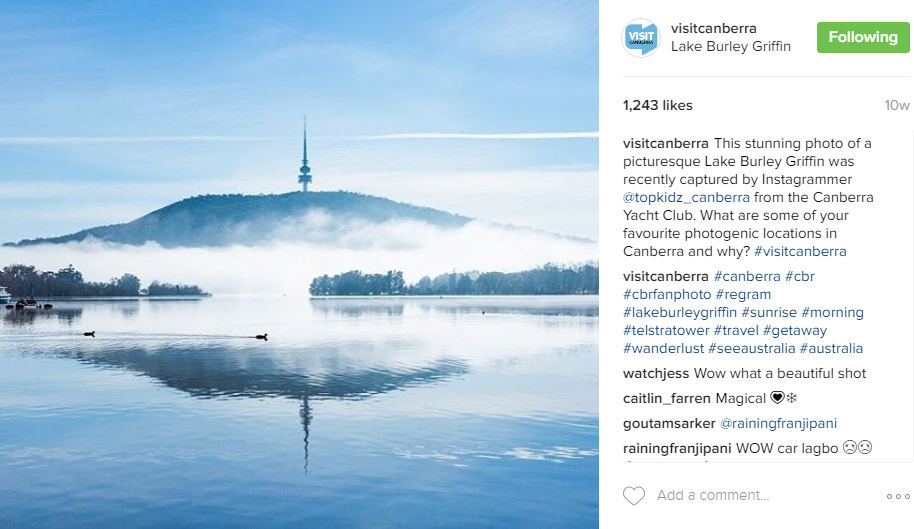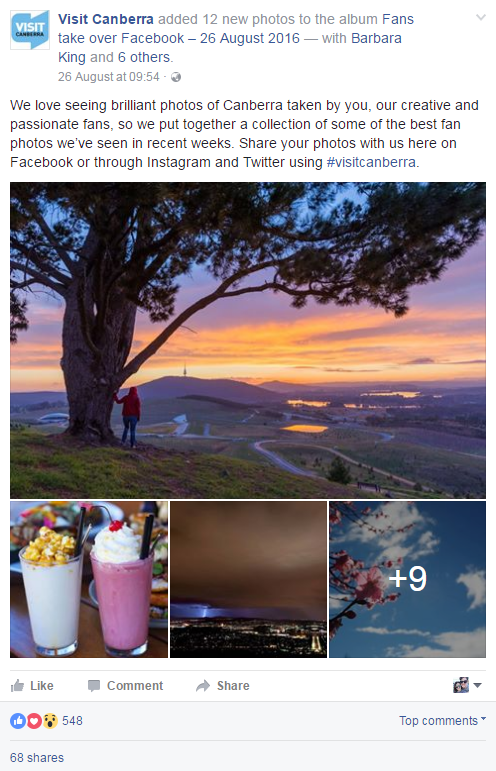Ever wonder how some organisations have such huge followings on Instagram? Chances are they are using user-generated content.
There’s something about storytelling that underpins a successful communications strategy. There is a reason Humans of New York has over 17 million followers on Facebook. We love to hear people’s stories.
Stories authenticate content.
The popularity of social media sites such as Instagram, Snapchat and Facebook is a case in point as to how we like to tell our own stories.
The cleverest of brands have worked out how to make these storytellers work with them. Enter user-generated content.
“UGC is the modern version of talking over the garden fence – nothing brands can create themselves can even compare to the basic human love of gossip, and themselves,” says Sophie Turton of Econsultancy.
You could be creating some of the highest quality content out there, but people still like to feel involved.
Ipsos CT and Crowdtap found that millennials trust user-generated content 50% more than other media. Not only that, but they are spending 5 hours a day consuming user-generated content.
When social media marketing company Buffer researched how some of the most popular Instagram accounts had achieved their large followings, they found one strategy continually reappeared: user-generated content.
So they decided to give it a try for themselves. In under three months, their account grew by 60% from 5,850 to 9,400 followers. Buffer’s Instagram account now has over 14,000 followers and counting.
One of my favourite government platforms for user-generated content is Visit Canberra. The Visit Canberra team have cleverly applied a user-generated content strategy across their social media platforms.
Visit Canberra’s Instagram description reads: “Before experiencing one good thing after another in Canberra, experience one good photo after another here. Use #visitcanberra to allow us to share.”
As a result, Visit Canberra’s content is a colourful mix of photos sourced directly from users on the hashtag #visitcanberra. Users love to see their images on the popular platform, and Visit Canberra gets quality, engaging content. It’s a win-win.

So how can you incorporate user-generated content into your marketing strategy?
Create a hashtag
Take some time to brainstorm a relevant hashtag. Not only will this drive your brand awareness and identity, but it will also give users a simple way to share their content with you.
Be creative with your hashtag, but make sure it has a relevant link back to your organisation.
Once you have decided on a hashtag, encourage users to join in and use it in every post. You should also put it in your account’s description.
Choose your channels
Instagram is the easiest platform to find and share user-generated content, however, this doesn’t mean you can’t incorporate it onto Facebook and Twitter as well.
In Visit Canberra’s case, user-generated content is collected across all three platforms and shared in Facebook albums and on Instagram.

Run a competition
If your account hasn’t got a solid following already, a good way to boost numbers quickly is by running a competition.
Think of a unique reward you can offer your followers and encourage them to join the competition by sharing a photo using your hashtag.
Ask for permission to share
Even though you have put your hashtag in your description, you should always ensure you are getting in contact with the photo’s owner and asking for permission to re-post it.
This can be as simple as commenting on the photo itself, or if you prefer to keep it private, send them a direct message with the image attached.
A simple message you can use is:
“Hi, we absolutely love your photo! Would you be happy for us to re-post it on our account? We will make sure it’s credited to you.”
On that note, make sure you always credit the photographer by tagging their username in both the image caption and on the image itself.
User-generated content is a fantastic way to build and engage your audience and establish your brand identity.
Does your organisation include user-generated content in its communications strategy?
